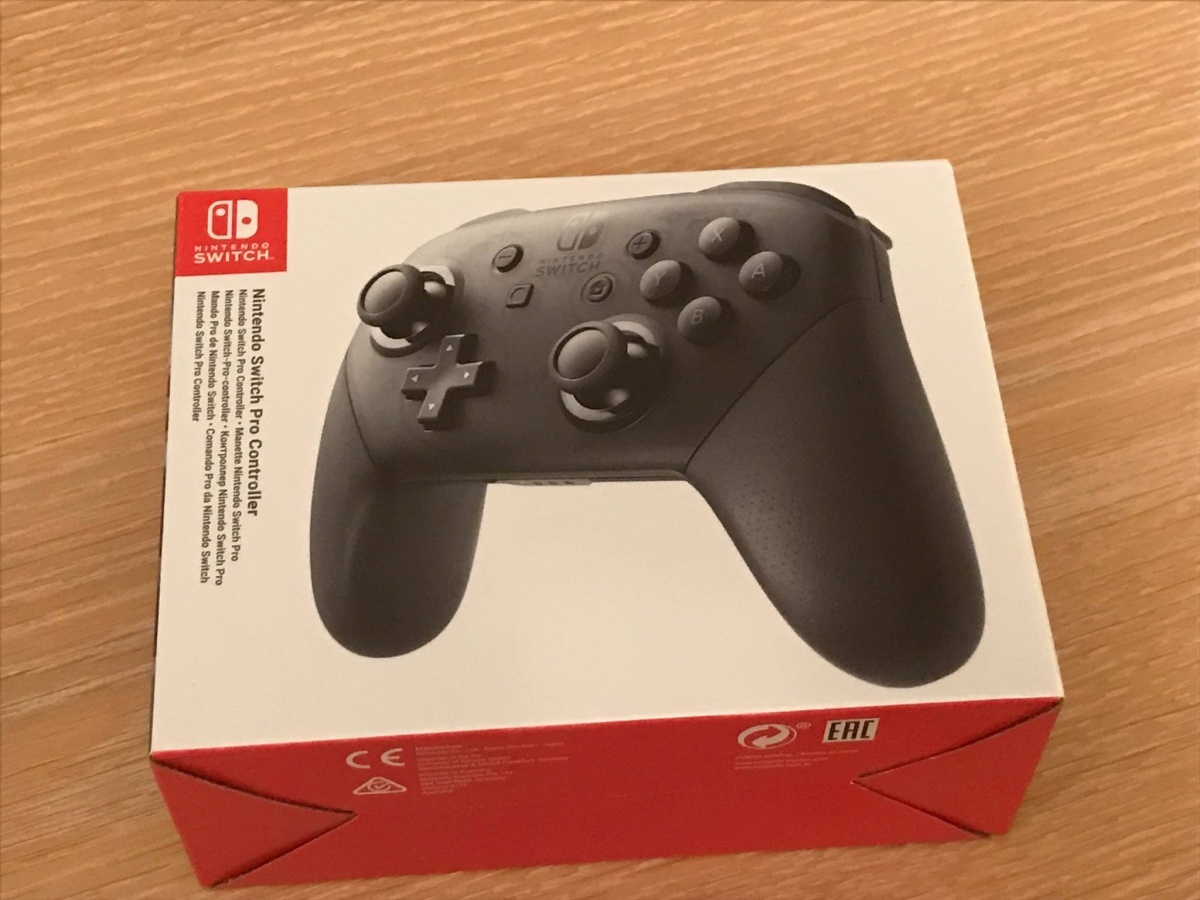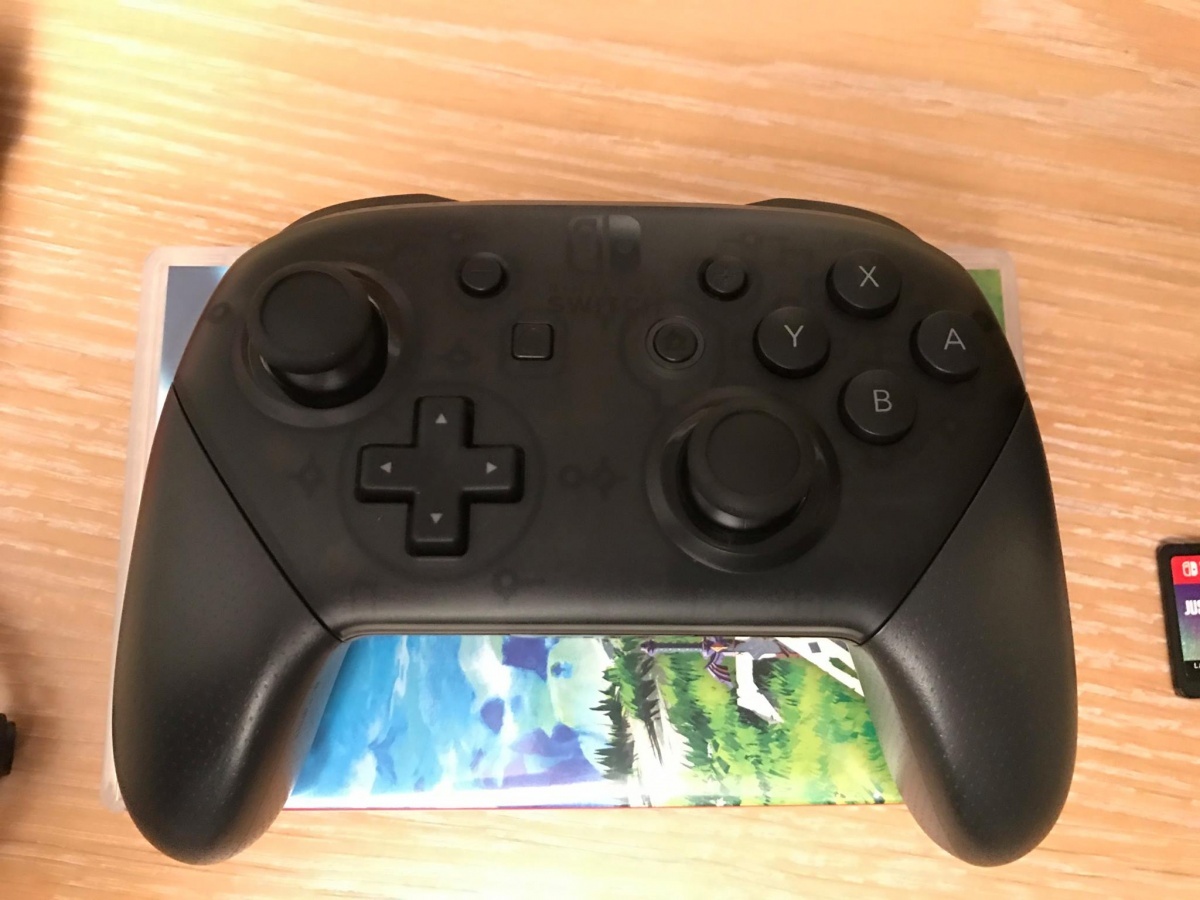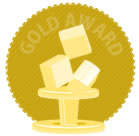
Foregoing the asymmetrical stick setup its predecessor (and InterWORKS variable) popularised, the Switch Pro Controller places the right analogue stick below the face buttons, creating a very familiar feel for Xbox fans. Both sets of shoulder buttons are in place, and deliver feedback with satisfying clicks. The outer shoulder triggers are once again digital and not analogue, meaning they don't travel inwards, so a less than ideal setup for potential racing games on the system, but in line with the Joy-Con triggers. The grips of the Switch Pro have a matte cover to them, and the middle of the device has a clear plastic cover showing the outer layer of circuitry within, meaning zero fingerprint smudges that would plague the Wii U Pro pad, and giving a retro look that hearkens back to the translucent consoles of old.

Even for bigger hands, the Switch Pro Controller effortlessly moulds to the hands, providing easy access to all its inputs. Not heavy, but enough weight to prevent the pad from feeling cheap and fragile. Like the Switch console itself, USB-C is supported here for recharging and initial connection purposes, bringing with it a faster charging speed than what regular USB is capable of. Luckily, a lengthy charging cable is included with the device for that purpose, and can be useful for the console itself when in portable mode.
Many unique aspects of the Joy-Con halves have been brought over to the Switch Pro. HD Rumble has been added to each side of the controller, and works equally as well in supported games. The Near-Field Communication reader that utilises amiibo readings is right in the middle of the controller, and gyroscope functionality is also present. The Share and Home keys have also been brought over, but their placement just underneath the Plus and Minus buttons takes some adapting to as not to hit accidently. The latter buttons are raised higher, so this won't take long, and the easy access to all functionality is ultimately ideal. Sadly, there is no power button, so holding down the Home key will only be able to put the Switch into sleep mode, although this can potentially be solved with an OS update in future.

One key feature missing from the Joy-Con is also likely the key selling point for many potential purchasers of this controller, and that is the almighty D-pad. This one in particular is satisfyingly clunky, and as if to emphasise the Pro as the best choice for retro-inspired games, the face buttons are also much bigger than on the Joy-Con and equally as gratifying to press.

The Recommended Retail Price of the Switch Pro Controller is a bit higher than the primary pads of other consoles nowadays, and on the surface it doesn't appear to do much more or less than those, but compared to the DualShock 4 and Xbox One controllers at launch, it is only slightly more expensive and is rechargeable, unlike the Xbox controller that required batteries. The 40-hour battery life may raise a curious eyebrow, and the new functionality (like the NFC reader) under the hood goes a long way to help justify the extra cost, especially when compared to the DualShock 4 that has a low battery life. The included USB-C cable, which for its length is usually quite costly for a good quality one, also adds value. The Switch Pro Controller is by no means absolutely essential as the Joy-Con setup can replicate everything it can do functionally, but it will undoubtedly be useful for retro and indie gaming, in what is one of Nintendo's best controllers yet.

Exceptional - Gold Award


 Sign In
Sign In 07.03.2017
07.03.2017  Azuardo
Azuardo 
 Link to this post:
Link to this post:  Subscribe to this topic
Subscribe to this topic Features
Features






 Top
Top

